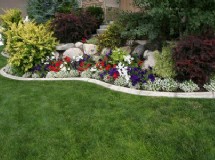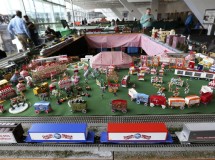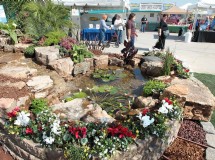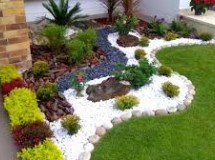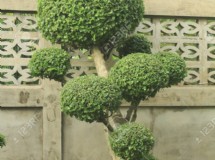- All fiberglass consists of very fine glass fibers processed in dozens of different ways to create new, strictly nonorganic materials that closely resemble fabrics usually made of organic fibers. A fiberglass candle or lamp wick is made of glass fibers that have been spun into yarn and then braided or woven to form wicks that are almost indistinguishable from traditional cotton or linen wicks. Some vendors sell fiberglass wicks alongside other varieties.
- Candle wicking is either sold in standard, premeasured rolls or spools or by measured lengths for a particular application. A code of numbers and letters is applied to wicking material: The first indicating how many spools or yarn were used to make the wick. A higher number will indicate a larger diameter wick and generally higher wax consumption. The second number indicates the speed at which the wick was braided or twisted; a higher number indicates less fuel consumption. The third number tells the temperature of the wax applied as the wick is fed through braiding or twisting machinery.
- Fiberglass wicks, sometimes a combination of fiberglass and other fibers, are generally known to be more high temperature resistant than natural fibers. They are recommended for use in traditional oil lamps and in the very popular fragrance oil lamps sold in gift shops and department stores. Fiberglass wicks are also widely used in patio torches which sometimes burn insect-repellent scented oil and which are commonly allowed to burn for many hours.
- While a few vendors of fiberglass wicks offer them for use in pillar candles and tapers, no one seems to recommend them for container candles like votives. In addition, actual recommendations for the use of fiberglass wicks in hobby candles of any kind are rare, and some vendors of supplies for amateur use do not sell fiberglass wicks at all.
- Probably the only way to assure success in candle making is to conduct enough experiments with wicks, fuels and methodology to reveal any negative outcomes. Pillar candles with fiberglass wicks may perform perfectly, but it will be worthwhile to assure that the wick consumes the fuel at an acceptable rate, that the candle does not smoke or produce unpleasant odors, and that the burn is controllable and safe. Other factors that can affect the burn performance are the diameter and height of the candle, the quality of the paraffin and the kinds of additives used, including dyes and fragrances.
Fiberglass Wicks
Buying Candle Wicks
Applications for Fiberglass Wicks
Fiberglass Wicks in Candles
How to Choose a Wick
SHARE



